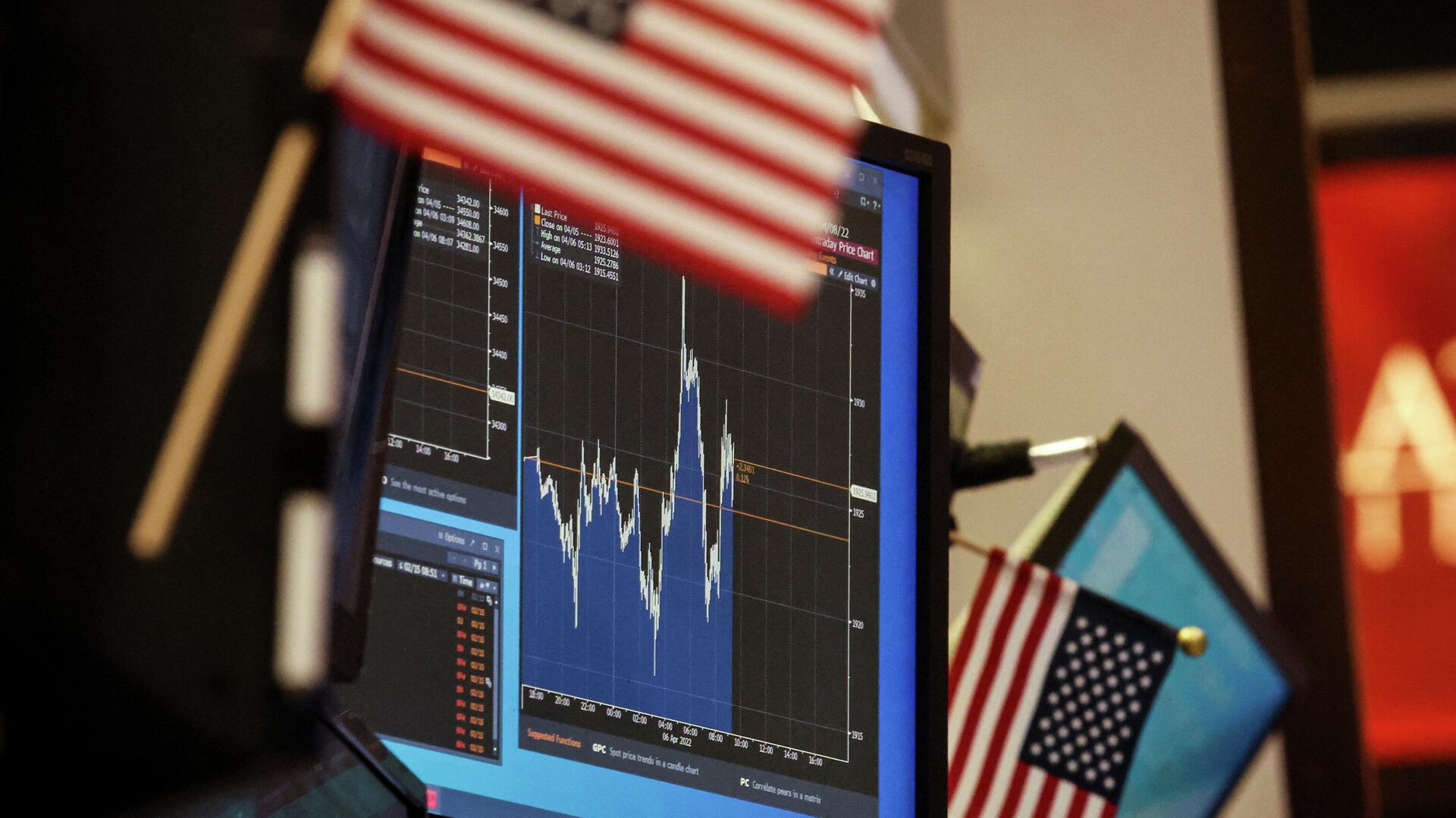https://sputnikglobe.com/20220418/us-inflation-warning-heightens-as-bond-yields-top-3-year-highs-gold-at-2000-1094867410.html
US Inflation Warning Heightens as Bond Yields Top 3-Year Highs, Gold at $2,000
US Inflation Warning Heightens as Bond Yields Top 3-Year Highs, Gold at $2,000
Sputnik International
NEW YORK (Sputnik) - Alarm bells on US inflation hit a new crescendo on Monday as the yield on ten-year bonds rose to highs not seen in more than three years... 18.04.2022, Sputnik International
2022-04-18T17:47+0000
2022-04-18T17:47+0000
2022-04-18T17:48+0000
us
inflation
gold
https://cdn1.img.sputnikglobe.com/img/07e6/04/06/1094536030_0:321:3071:2048_1920x0_80_0_0_9a950ad93c93af7aee8fdae7519d85b8.jpg
The yield on the Treasury’s benchmark ten-year note peaked at 2.884%, a level unseen since December 2018, when it stood at 3.050%.Treasury notes like the ten-year are highly subject to inflationary pressure despite being guaranteed by the US government. If an investor were to purchase one of the bonds, and inflation then picks up, the purchasing power of their principle can be severely hurt by the time their security reaches maturity - despite the application of interest. The yield on the ten-year note, thus, is a measure of investor-confidence in the markets.Gold futures on the New York Mercantile Exchange’s Comex division soared to a five-week high of $2,000.55 an ounce as inflation fears ratcheted across markets on Monday, traders said.The last time gold got to above $2,000 an ounce was on March 11, a fortnight after the start of Russia’s special military operation in Ukraine that heightened geopolitical risk across markets. Gold is a favorite investor hedge against both economic and political troubles.“There’s a degree of both economic and political concerns in today’s gold rally as the geopolitical implications from Ukraine can escalate out of nowhere,” Phillip Streible, precious metals strategist at Blue Line Futures in Chicago, said. “But I think inflation is the bigger factor over concerns that an aggressive Fed response could tip the US economy into recession.”Unrelenting inflation pressure has forced policy-makers at the Federal Reserve to embark on the fastest pace of interest rate hikes in 40 years to measure up to price growth.After slashing rates to nearly zero at the height of the coronavirus outbreak, the central bank's policy-making Federal Open Market Committee, or FOMC, approved the first pandemic-era rate hike on March 16, raising rates by 25 basis points, or a quarter point.Many FOMC members have concluded since that the hike was too tame to rein in inflation galloping at its fastest pace since the 1980s, and that more aggressive increases of 50 basis points may be needed in the future.The central bank’s typical target for inflation is just 2% per year- a level it considers “neutral”. To get to this, it envisages that it will need six more rate hikes this year - one every monthly FOMC meeting from now. Investors fear that the end-result will be recession. The last time the US economy experienced a recession, which is technically defined as two straight quarters of negative growth, was during the height of the COVID-19 outbreak between March and September 2020.
https://sputnikglobe.com/20220413/us-inflation-has-probably-peaked-but-rate-hikes-must-continue---federal-reserve-official-1094745021.html
Sputnik International
feedback@sputniknews.com
+74956456601
MIA „Rossiya Segodnya“
2022
Sputnik International
feedback@sputniknews.com
+74956456601
MIA „Rossiya Segodnya“
News
en_EN
Sputnik International
feedback@sputniknews.com
+74956456601
MIA „Rossiya Segodnya“
Sputnik International
feedback@sputniknews.com
+74956456601
MIA „Rossiya Segodnya“
us, inflation, gold
US Inflation Warning Heightens as Bond Yields Top 3-Year Highs, Gold at $2,000
17:47 GMT 18.04.2022 (Updated: 17:48 GMT 18.04.2022) NEW YORK (Sputnik) - Alarm bells on US inflation hit a new crescendo on Monday as the yield on ten-year bonds rose to highs not seen in more than three years, while gold prices briefly broke back above $2,000 an ounce as investors sought a hedge against soaring price pressures.
The yield on the Treasury’s benchmark ten-year note peaked at 2.884%, a level unseen since December 2018, when it stood at 3.050%.
Treasury notes like the ten-year are highly subject to inflationary pressure despite being guaranteed by the US government. If an investor were to purchase one of the bonds, and inflation then picks up, the purchasing power of their principle can be severely hurt by the time their security reaches maturity - despite the application of interest. The yield on the ten-year note, thus, is a measure of investor-confidence in the markets.
Gold futures on the New York Mercantile Exchange’s Comex division soared to a five-week high of $2,000.55 an ounce as inflation fears ratcheted across markets on Monday, traders said.
The last time gold got to above $2,000 an ounce was on March 11, a fortnight after the start of Russia’s special military operation in Ukraine that heightened geopolitical risk across markets. Gold is a favorite investor hedge against both economic and political troubles.
“There’s a degree of both economic and political concerns in today’s gold rally as the geopolitical implications from Ukraine can escalate out of nowhere,” Phillip Streible, precious metals strategist at Blue Line Futures in Chicago, said. “But I think inflation is the bigger factor over concerns that an aggressive Fed response could tip the US economy into recession.”
Unrelenting inflation pressure has forced policy-makers at the Federal Reserve to embark on the fastest pace of interest rate hikes in 40 years to measure up to price growth.
After slashing rates to nearly zero at the height of the coronavirus outbreak, the central bank's policy-making Federal Open Market Committee, or FOMC, approved the first pandemic-era rate hike on March 16, raising rates by 25 basis points, or a quarter point.
Many FOMC members have concluded since that the hike was too tame to rein in inflation galloping at its fastest pace since the 1980s, and that more aggressive increases of 50 basis points may be needed in the future.
The central bank’s typical target for inflation is just 2% per year- a level it considers “neutral”. To get to this, it envisages that it will need six more rate hikes this year - one every monthly FOMC meeting from now. Investors fear that the end-result will be recession. The last time the US economy experienced a recession, which is technically defined as two straight quarters of negative growth, was during the height of the COVID-19 outbreak between March and September 2020.


